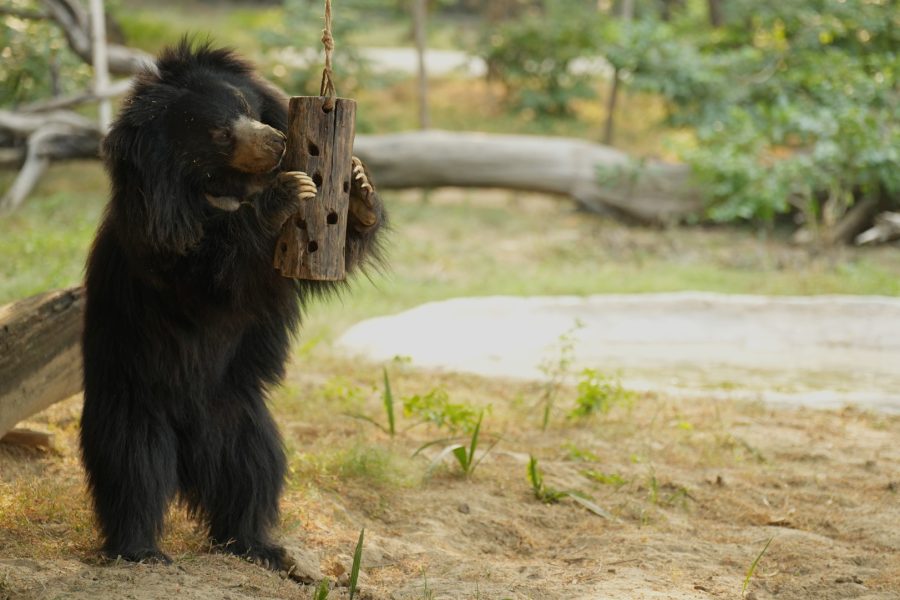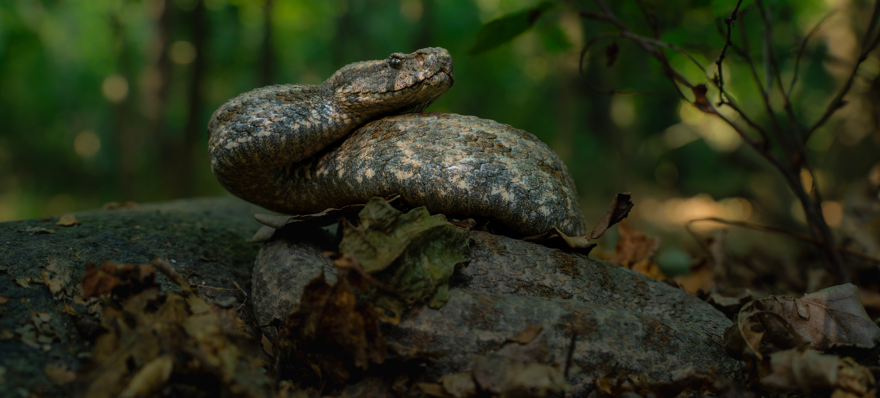Most people find the sloth bear to be a bizarrely fascinating and ultimately charismatic bear. As intriguing as they are, there is actually very little known about this bear. As a matter of fact, of the eight living species of bears in the world, sloth bears might be the most mysterious of them all.
Wildlife SOS has been teaming up with the Hogle Zoo and the Akron Zoo to study the behavior of pregnant sloth bear denning as well as their behavior and use of the dens after giving birth to their cubs. Our study has not yet concluded; however, we have some preliminary data that you might enjoy including some camera trap photos that were taken by camera traps set near active maternal sloth bear dens.
After giving birth the new mothers stay in their dens with their cubs for an extended amount of time without coming out for food or water. Exactly how long they stay in the den is not known though previous studies suggest it may be longer than a month.

When the mother bear first leaves the den for food and water the cubs are left behind. The mother bears first trips are quite short because the cubs are at risk from predators. The cubs may not leave the den for the first time for at least another two weeks after the mother first leaves the den. It appears that many maternal dens (dens in which a pregnant sloth bear gives birth) are quite large and can go back quite a distance. Some of these dens are dug by the bears themselves while others are naturally occurring caves.
Our study is also aimed at studying the dimensions of the sloth bear dens, particularly maternal sloth bear dens, as well as their location on the landscape. Therefore we are collecting data on den dimensions, as well as the topography and habitat of the area in which the dens are found. We also measure the distance of the den from such things as water sources, human habitations, roads and trails. We are collecting all of this data in order to better understand how the bear chooses its dens and the den locations.

When the cubs begin leaving the den they ride on their mothers backs by clinging to the thick fur on their mothers backs. They will continue to ride on their mothers back for roughly the first nine months of their lives. This helps to protect them from predators that they may encounter. Can you spot any cubs on this mother back?

Many species, other than sloth bears, also make use of the same types of dens. We captured many photos and video of porcupines and leopards in close proximity to sloth bear dens. Here is a leopard that was photographed with the camera trap set to capture sloth bears leaving their den. Leopards are a potential predator of sloth bear cubs and therefore are not welcomed by sloth bear moms.
It is our hope that the information we get from this study and others like it will assist in providing better protections for sloth bears.




